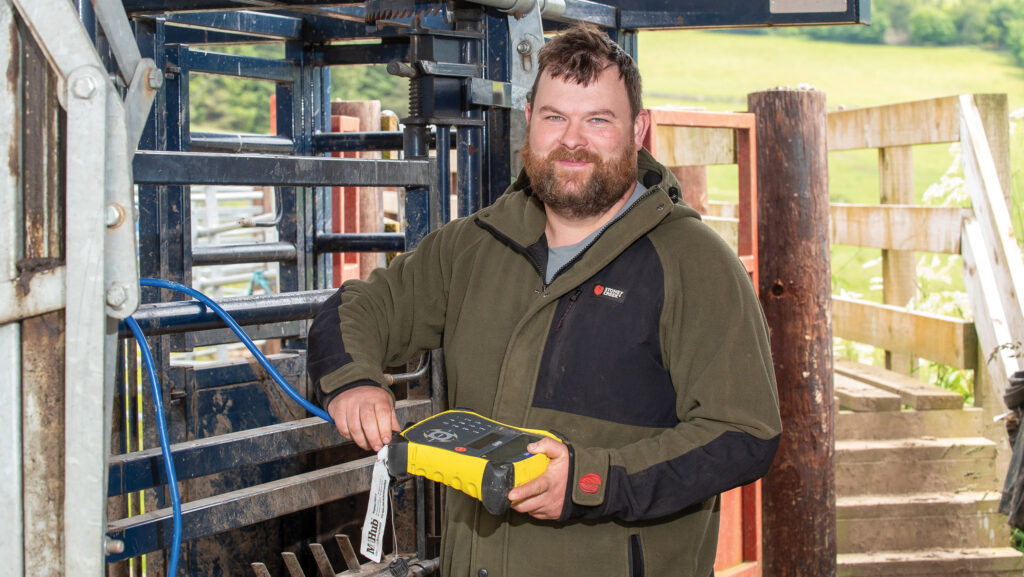Farmer Focus: Water divination helps field drain maintenance
 Duncan Morrison © Angus Findlay
Duncan Morrison © Angus Findlay January and February are usually months where we get some much-needed maintenance done.
We have spent the past few weeks fixing field drains, and I’ve been practising my water-divining skills.
See also: Advice on testing and keeping water clean for livestock
I seem to have been given the ability to find water with a couple of pieces of old fencing wire, something I was shown how to do as a young lad while working on another farm.
I’m able to track its direction and work out its depth by measuring the distance between two points that the rods cross.
It can be pretty deceiving though, digging for what seems an eternity for that elusive clay tile that turns out to be water coming from a seam of rock.
We recently had our ewes and hoggs scanned. Ewes ended up scanning at 215%, and hoggs at 100%, which was a decent outcome, although there were a few too many triplets in the ewes, and twins and empties in the hoggs.
They were in fine fettle, an outcome of living a charmed life on a cattle-dominated farm.
Calving is about six weeks away and is my favourite time of the year. I get a real buzz from seeing the outcome of my breeding decisions come to fruition, learning what has worked and what needs attention.
The years of selection pressure are worthwhile when a young heifer you have bred yourself has a calf sired by a home-bred bull, mothers it perfectly, and the calf suckles unassisted.
It doesn’t always work out this way, but the constant search for perfection is what keeps cattle breeding interesting.
Technology is a wonderful thing. We synchronise and inseminate all of our Stabiliser heifers each year before chasing up with yearling bulls. It gives us access to some good-quality genetics and works well for heifers.
But I cocked up my semen order in 2023 and had to use straws of two different bulls on a couple of heifers 24 hours apart.
DNA tests later revealed that one heifer had twin heifer calves with different sires – a black calf by a black bull, and a red calf by a red bull.
They are both selected to be bulling heifers this summer, so there will always be a unique story about them when they hopefully become full-time members of the herd.

